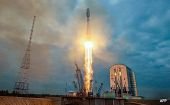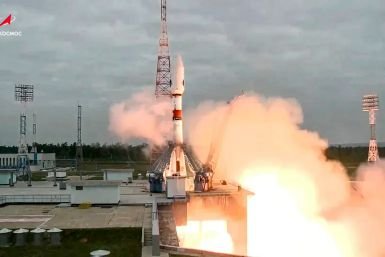Russia launches first Moon mission in almost 50 years, shortly after Chandrayaan-3
On Friday, a rocket carrying a lunar landing module was launched from Russia’s Vostochny spaceport, beginning a lunar landing mission. After making an unsuccessful attempt to reach the moon in 1976, when it was still a part of the Soviet Union, this is Russia’s first moon mission in almost five decades.
On August 23, when an Indian spacecraft launched on July 14 is expected to arrive, the impending Russian lunar landing will arrive at its destination. The journey of the Russian module will take about 5.5 days to cover the distance to the moon’s vicinity. Then, before starting its descent towards the lunar surface, it will spend an estimated three to seven days in orbit at a height of about 100 kilometers (62 miles).
Historically, only three nations, namely the Soviet Union, the United States, and China, have achieved successful moon landings. Now, both India and Russia are striving to secure their positions as the first nations to successfully touch down at the moon’s south pole. Roscosmos, the Russian space agency, seeks to assure reliable access to the moon’s surface for future missions as well as to show that Russia is capable of sending cargo there.
The Luna-25 launched flawlessly from the Vostochny Cosmodrome in Russia’s Far East, according to video feed from Roscosmos. The spaceport is a pet project of Russian President Vladimir Putin and is key to his efforts to make Russia a space superpower and move Russian launches from the Baikonur Cosmodrome in Kazakhstan.
Popular Russian space analyst Vitaly Egorov told AP that studying the moon was not the intended outcome. The purpose is political rivalry between the USA and China, two superpowers, as well as a number of smaller nations that are vying for the title of space superpower.

Russia now faces greater barriers to acquiring Western technology as a result of sanctions imposed after its invasion of Ukraine. Russia’s space program is thus dealing with serious difficulties. The Luna-25 mission, which once planned to carry a small moon rover, is one famous example. Analysts claim that the decision was made to abandon this plan and instead reduce the craft’s weight in an effort to increase the craft’s dependability.
“Foreign electronics are lighter, domestic electronics are heavier,” Egorov said. “While scientists might have the task of studying lunar water, for Roscosmos the main task is simply to land on the moon – to recover lost Soviet expertise and learn how to perform this task in a new era.”
According to the video feed given by Roscosmos, the Luna-25 was successfully launched from the Vostochny Cosmodrome in the Far East of Russia.Because it was Vladimir Putin’s idea personally, this spaceport is significant in a specific way. Its strategic significance stems from President Putin’s desire to make Russia a space powerhouse.This project’s main goal is to move Russian space launches from Kazakhstan’s Baikonur Cosmodrome to the Vostochny Cosmodrome.In contrast, an earlier Indian effort at a lunar landing in 2019 that was directed at the moon’s southern pole ended in failure when the lander crashed as it descended to the lunar surface.
Read more articles at: https://dollarsbag.com/moneymatters360-navigating-financial-frontiers-with-cnn-money-2023/


